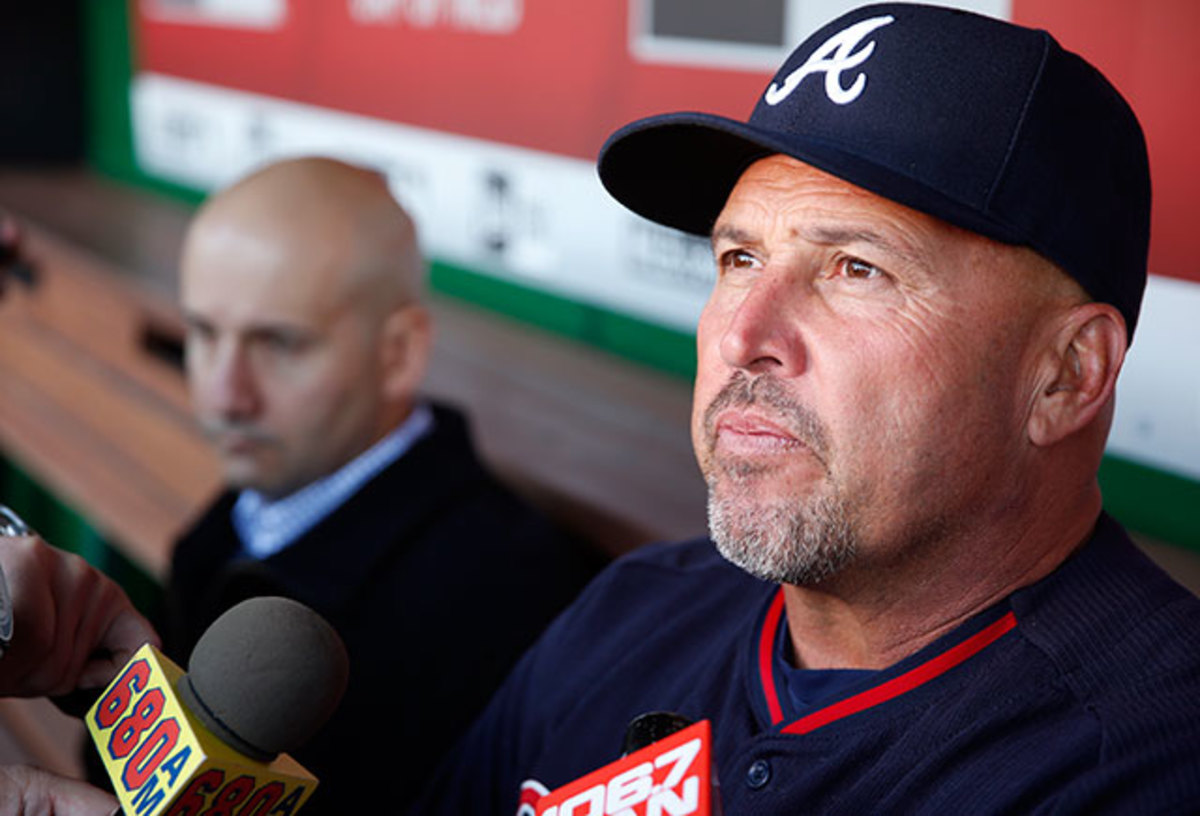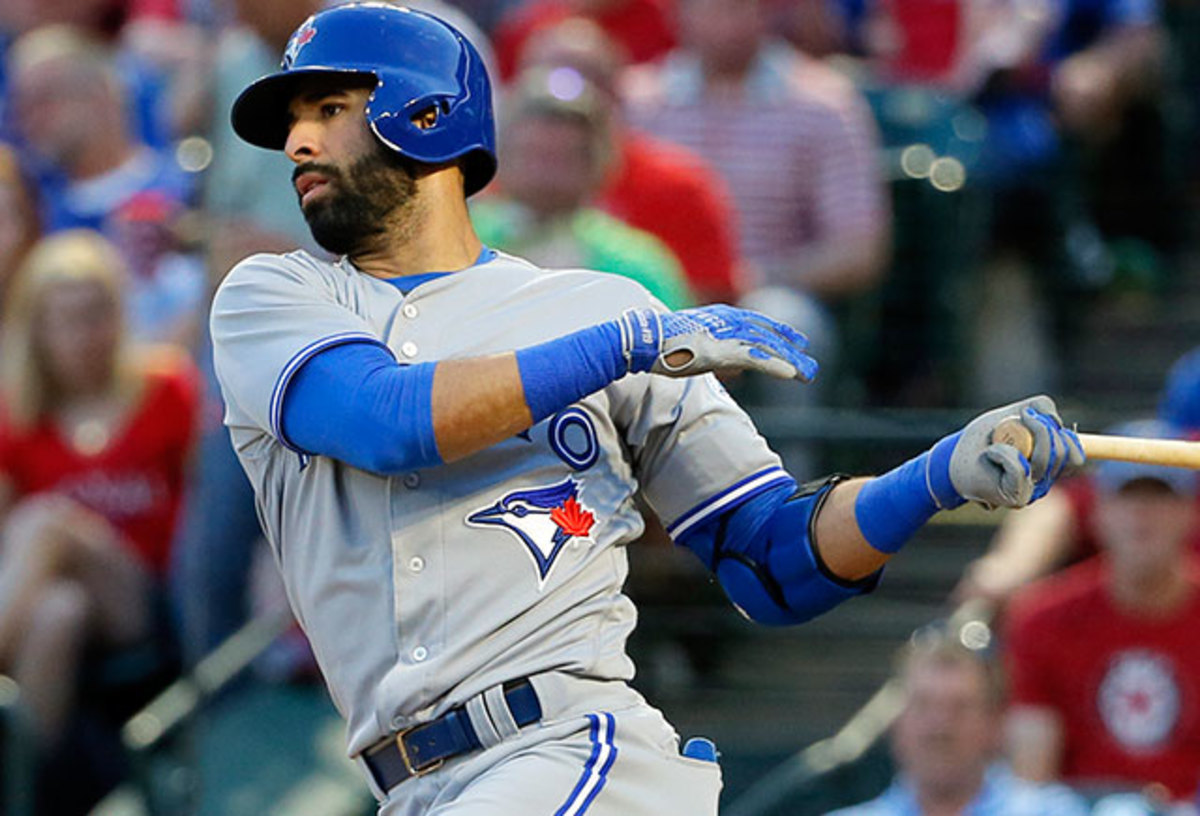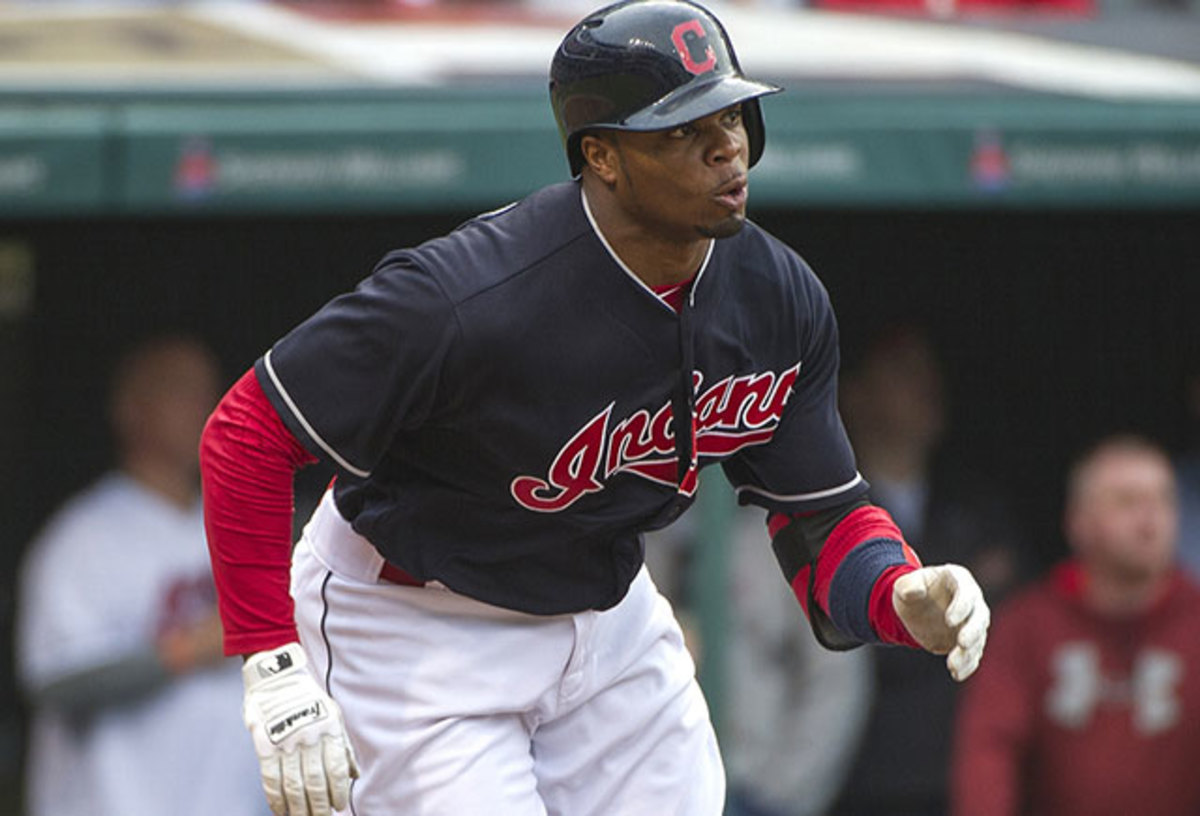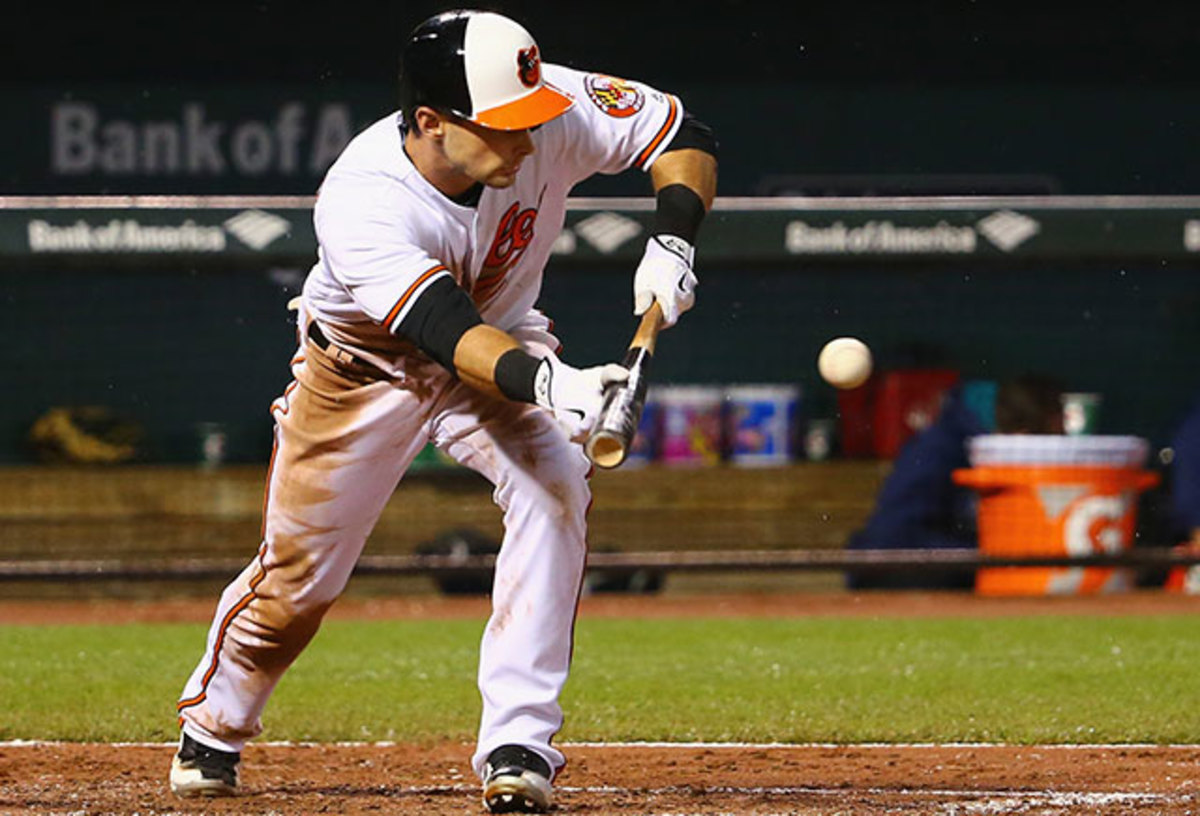The 30: Stats don't lie in this week's MLB Power Rankings

The 1947 season was a momentous one for baseball. Jackie Robinson, a year after being signed by Branch Rickey and enjoying a stellar campaign for the Triple A Montreal Royals, got called up the Show. In his debut big league season, Robinson won the Rookie of the Year award and lifted the Brooklyn Dodgers to just their second National League pennant in 27 years.
Far more quietly, another Royal grabbed Rickey’s attention, earning a promotion of his own. Montreal native Allan Roth kept statistics for the team, tracking results such as batting averages against left and righthanded pitchers, day- and night-game results and numbers in different parks. So while Robinson was busy dazzling fans with his on-field exploits, Roth toiled quietly by Rickey’s side, slicing and dicing numbers that might seem mundane now but qualified as revolutionary back then. Roth’s work with the Dodgers marked the start of teams growing more serious about the value of analytics, and how rigorous statistical analysis could help win games.
Seven decades later, all 30 major league teams use analytical thinking to inform everything from player acquisitions to in-game strategies. Still, every club uses a different approach when it comes to weaving statistical concepts into everyday decisions. In this week’s edition of The 30, we’ll look at four of those teams. The Braves get a chance to recalibrate after Fredi Gonzalez’s ouster. The Blue Jays try to shake out of their doldrums by shaking up their lineup. The Indians use speed (and smarts!) on the base paths to their advantage. And the Orioles look for subtle ways to gain an edge on the competition.
Time to crunch the numbers. It’s Week 7 of The 30.
Best Disregard for Life and Limb: Jason Heyward
Few plays present a more daunting challenge than chasing down a fly ball in right-centerfield at San Francisco's AT&T Park. At 421 feet at its deepest point, it’s a nearly endless run back to the wall, with the added challenge of the rightfielder having to take a lateral and diagonal path to get there when the centerfielder can’t. So when the Giants' Denard Span crushed a deep drive in that direction Friday night, it was tough to imagine anyone catching up to it.
Luckily for the Cubs, Jason Heyward was on the case. The Gold Glove rightfielder got a great jump on the ball, tracked its flight path perfectly, sized it up as it dropped out of the sky, dived and made a jaw-dropping catch.
The problem? It also looked like his body had broken into a million pieces.
Fortunately for the Cubs, what looked like a devastating injury for Heyward has since been diagnosed as a hip contusion—one that might see him return to the lineup in the next couple of days. During a season in which Chicago can lose one of the most talented young hitters in the game for the entire season and more recently go on a losing streak and still maintain a huge lead over the rest of the division, skill and good fortune might be on the Cubs’ side.
• MORE MLB: Pending strike zone changes could alter MLB landscape

Ready After Fredi?
The Braves firing their manager presents opportunities to try new things.
30. Minnesota Twins (11–32 record, minus-74 run differential, last week: 29)
29. Atlanta Braves (12–31, minus-71, LW: 30)
28. Cincinnati Reds (15–29, minus-87, LW: 28)
27. Milwaukee Brewers (18–26, minus-39, LW: 27)
26. Oakland A’s (19–26, minus-52, LW: 26)
25. Houston Astros (17–28, minus-33, LW: 25)
24. San Diego Padres (19–26, minus-31, LW: 24)
23. Los Angeles Angels (20–24, minus-15, LW: 22)
The Braves’ firing of manager Fredi Gonzalez last week isn’t going to make them a good team, or even a respectable one. As general manager John Coppolella explained on my podcast the day before Gonzalez’s firing, Atlanta might not have anticipated being this bad in 2016, but it wasn’t going to go spend for premium talent in the early stages of a rebuilding project either.
In that hour-long conversation, Coppolella and I didn’t talk that much about Gonzalez or his in-game tactics. But one segment stuck with me afterward: Coppolella noted with great disappointment that the Braves hadn’t won a playoff series in 15 years. He then said how he can still picture then-closer Craig Kimbrel standing in the bullpen at Dodger Stadium, hands on hips, as Juan Uribe rounds the bases following his go-ahead eighth-inning home run off then-setup man David Carpenter.
Three Strikes: Kevin Kiermaier injury another hit to Rays; more notes
The Braves might have gone on to lose that game and series to the Dodgers no matter what Gonzalez had decided to do with his bullpen, and Atlanta would certainly still be a lousy team this year no matter how many Bill James Abstracts the manager kept tucked under his arm. But when the Braves find a successor to interim skipper Brian Snitker, don’t be surprised if his replacement combines the leadership skills that Coppolella and every other GM craves with someone who’s more open to outside-the-box thinking.
Using your best relief pitcher based more on leverage than on pre-defined roles would be a great place to start. Some of the tactics discussed with this week’s three other featured teams would be great too. After that, it will be up to Coppolella, John Hart and the rest of the Braves’ front office to find much, much better talent. The worst offense baseball has seen in years, leavened only with a Matt Wisler-type pleasant surprise or two, won’t be nearly enough to win that elusive playoff series, or even threaten to make the playoffs.
That front office has started to make the kind of shrewd moves that could bear fruit down the road. But when the Braves open their latest new, publicly financed, more-harm-than-good stadium next spring, they still might be a couple years away from becoming real contenders. Whoever replaces Gonzalez, like his bosses, will need uncommon patience to make this grand experiment work.

First Things First
The Jays have major offense and bullpen problems, but at least they made a good call with their new leadoff man.
22. Arizona Diamondbacks (21–25, minus-4, LW: 23)
21. Tampa Bay Rays (20–21, plus-13, LW: 19)
20. Detroit Tigers (21–22, minus-5, LW: 21)
19. Miami Marlins (22–21, minus-11, LW: 16)
18. New York Yankees (21–22, minus-19, LW: 20)
17. Colorado Rockies (21–21, minus-3, LW: 17)
16. Philadelphia Phillies (25–19, minus-31, LW: 15)
15. Los Angeles Dodgers (22–23, plus-15, LW: 10)
14. Kansas City Royals (22–21, minus-13, LW: 18)
13. Toronto Blue Jays (22–24, plus-2, LW: 13)
When it comes to integrating analytical concepts into baseball thinking, all of us have come a long way—as teams, media and fans. But certain biases remain. When you grow up watching waterbugs like Vince Coleman manning the top of major league lineups, it can be tough to imagine muscle-bound sluggers taking that role instead.
By installing Jose Bautista in the leadoff spot for the Jays, John Gibbons spat on those old biases. Bautista does rate as an above-average overall base runner, with 59 career steals to his credit. He’s also socked 296 career home runs and fits the mold of the quintessential middle-of-the-order hitter. But the Jays’ offense has plummeted from last year’s best-in-the-league heights, when you could put almost anyone’s numbers at the top of the order and have been fine. They needed a player who can get on base ahead of Josh Donaldson and Edwin Encarnacion. Since Opening Day 2014, among American League hitters, only Miguel Cabrera and Mike Trout have reached base at a better clip than Bautista.
Still, even advancing from the speedsters-only argument for leadoff hitters to one that emphasizes the importance of on-base percentage doesn’t fully capture the rationale behind tossing Bautista into the one-hole. Our fixation with specific skillsets for specific spots in the order obscures the fact that the leadoff man is only guaranteed to come up once per game at the start of an inning. In fact, the only thing we can say for sure about lineup order is that it allocates times at bat. In today’s offensive environment, each spot that a hitter drops in the order costs him about 18 plate appearances over the course of a full season. So if Bautista were batting cleanup instead of leadoff, the Jays would be sending their second-best hitter to the plate about 54 fewer times a year—assuming Bautista played each and every day.
In-depth studies of batting order have found that when you combine that 18 PA-per-spot penalty with the diminished RBI opportunities batters face in certain lineup spots (including leadoff), teams should strive to put their best hitter in the No. 2 spot. The Jays are already doing this, placing Donaldson in that role and augmenting his RBI opportunities by batting Bautista right in front of him.
What's wrong with Matt Harvey? Examining struggles of Mets' star
With all of that said, these tweaks offer potentially small advantages, and that’s about it. By far the most important thing a manager can do to help his team score runs is to write nine good hitters’ names on the lineup card. For this year’s Toronto club, that’s been easier said than done. The two worst hitters in the AL (minimum 120 PA) have both been Blue Jays: Ryan Goins and Russell Martin. Toronto has started using Darwin Barney more often at second in lieu of Goins and could get potent 2015 rookie Devon Travis back this week, too, but the Jays owe Martin another $64 million through 2019 and have no exciting alternatives at catcher. In centerfield, Kevin Pillar deserves to play given his killer glove, but his decent offensive showing last season now looks like a mirage. At shortstop, Troy Tulowitzki has looked a lot better lately after a brutal April, but the MVP-caliber form he sometimes flashed in Colorado is probably never coming back. And while Encarnacion is still hitting for power, his numbers are still down sharply from his full-year 2015 output.
The good news is that all of those outcomes are fixable, whether through regression back toward career norms or a well-placed trade or two. In the meantime, Bautista has been a force in his first four games in the leadoff spot this year (.294/.368/.824 with three homers), freeing up Gibbons to solve the team’s two biggest remaining dilemmas: A leaky bullpen, and not enough general chaos. He’s faring well at handling that last goal, too.

Speed Kills
Off-season pickup Rajai Davis has made the Indians faster—and better.
12. Cleveland Indians (22–19, plus-26, LW: 14)
11. Pittsburgh Pirates (23–19, plus-5, LW: 12)
10. St. Louis Cardinals (23–21, plus-50, LW: 10)
9. Texas Rangers (25–19, plus-8, LW: 7)
8. San Francisco Giants (27–19, plus-6, LW: 9)
Even with the two-time defending AL champion Royals in their division and other upstarts likely to challenge, the Indians came into this season buoyed by optimism. Build on Francisco Lindor’s great rookie season, get some more lights-out starting pitching and usher a healthy Michael Brantley back into the lineup, and Cleveland figured to be dangerous in 2016.
Lindor’s kept up his end of the bargain, emerging as one of the best all-around players in baseball. The rotation hasn’t dominated, but Danny Salazar’s terrific first seven weeks have helped a lot. But Brantley didn’t go as planned: After appearing in just 11 games, he hit the disabled list again, leaving no set timetable for his return. Losing a player of that caliber for an extended period of time could seriously damage the Indians' playoff hopes.
How White Sox ace Chris Sale learned to do more (and be better) with less
Enter Rajai Davis. In December, the Indians inked him to a one-year, $5.25 million contract, netting insurance against further injury woes for Brantley or anyone else. Sure enough, they’ve gotten the full Davis experience: a solid fourth outfielder who, year after year, ends up with more playing time than anyone expected. After a slow start to the season, Davis went nuts this past week, going 10 for 27 with two homers, three doubles and six walks. That type of production almost certainly will end soon; Davis closed out the week by going 0 for 7. What could keep going, though, are his contributions on the base paths. With two stolen bases last week, Davis ranks among the AL leaders with 10. If we dig deeper than simple steals numbers, we find a hidden source of strength for the Indians: elite base running results.
Fangraphs tracks a stat called Baserunning Runs that considers steals totals and stolen-base success rates along with outcomes such as runners going first to third on singles, scoring from first on doubles and avoiding excessive outs on the basepaths. Lindor and Davis both rank in the AL’s top 10 in Baserunning Runs, and the Indians as a team lead the Junior Circuit. By stolen base success rate, they rank as the fourth-best team in the majors. When it comes to taking the extra base, Cleveland stands above all other teams in baseball. Though on-base percentage and air-tight defense get a lot of the ink when it comes to winning baseball ingredients, the old-school jackrabbit approach has driven much of the Indians’ early success.
Cleveland will likely still need help to knock off Kansas City, the recently slumping (but still division-leading) White Sox and the rest of the AL Central. Davis is a capable fill-in, but Brantley is one of the best hitters in the league, and the Indians’ offense could sputter without him. Cody Allen, Bryan Shaw, and Jeff Manship—three relievers expected to soak up tons of high-leverage innings this year—have all stumbled out of the gate. Getting Carlos Carrasco back in the next couple weeks would be a boon to the rotation, but the aging Mike Napoli and Juan Uribe have been replacement-level players this year, and the Indians might need to find upgrades for both.
If the Indians can stay in the race until the deadline, though, anything is possible. Running other teams ragged for two more months would be a great way to make that happen.

No-Bunt Zone
The Orioles' lack of interest in giving away outs works to their advantage.
7. New York Mets (25–18, plus-26, LW: 6)
6. Chicago White Sox (26–18, plus-33, LW: 3)
5. Seattle Mariners (26–17, plus-48, LW: 8)
4. Baltimore Orioles (26–16, plus-24, LW: 4)
3. Washington Nationals (27–17, plus-56, LW: 5)
2. Boston Red Sox (27–17, plus-66, LW: 2)
1. Chicago Cubs (29–13, plus-110, LW: 1)
Dan Duquette’s history of analytical decision-making doesn’t quite go back as far as Branch Rickey and Allan Roth. Still, given how revolutionary Moneyball seemed to so many people in around the industry in 2003 and how long before that Duquette had started to make his bones as a numbers-minded GM, it might as well have been.
Ramirez has paid 'transition tax' and joins Ortiz as leaders of Red Sox
Upon being hired as the Montreal Expos’ GM in 1991, Duquette quickly hired number cruncher and outsider Mike Gimbel to become a trusted lieutenant—someone who could help him diagnose roster strengths and weaknesses and find undervalued players to address his team’s needs. Duquette was run out of Boston by by a cranky media corps, but while Gimbel never caught on again in a major role within MLB, Duquette’s contrarian approach had a chance to succeed if he could just find another GM job. Now in his fifth season running the Orioles, Duquette has found that new gig, uncovered several more sources of hidden value and helped guide Baltimore to two unlikely playoff appearances in his first four years running the show.
The O’s are off to a hot start in 2016, threatening to make a run at a third playoff berth under Duquette. And while they aren’t linked to sabermetric ideas the way teams like the Cubs, Rays or post-Moneyball A’s are, you can still spot those early Duquette-Gimbel leanings if you look hard enough. This year brought us the great Baltimore hack-a-thon, hosted by Orioles execs and data scientists and designed to give analytically-focused fans a forum to bring forth numerically-based ideas that could help the team win.
More telling on the field has been the team’s aversion to sacrifice bunts. Baltimore hitters have laid down just one of those all season, tied with Tampa Bay for the lowest total in the majors. That follows a 2015 season in which the O’s executed the third-fewest sac bunts (only the statheads in Tampa Bay and Oakland laid down fewer). The other Duquette-led seasons saw the Orioles finish 18th, 19th and 25th in the majors in that department.
Of course, Duquette isn’t the man running the day-to-day clubhouse decisions, and Buck Showalter has earned a reputation as one of the shrewdest tactical managers in the game. But his decision making can’t help but be influenced by the personnel given to him by management. When the two big off-season lineup acquisitions are lumbering sluggers Mark Trumbo and Pedro Alvarez (added to a team that lacks the kind of speedy, bat-control specialists you’d expect to bunt), you’re almost forced not to try many sacrifices.
There’s a lot more to the story than a lack of bunts and a willingness to court stathead fans, of course. Trumbo has been a revelation as the annual low-cost pickup made good, Matt Wieters has bounced back impressively after a lost 2015 campaign, and Manny Machado has become such an all-around terror that we can safely and reasonably start comparing him to Mike Trout and Bryce Harper. Chris Tillman is pitching better than ever, backing up his sparkling 2.61 ERA with the best fielding-independent numbers of his career. And thanks to a combination of clever shopping, solid homegrown talent and Showalter’s tremendous and long-standing ability to handle a bullpen, O’s relievers sport the lowest collective ERA in the AL, replicating one of their biggest and most consistent advantages of the past several years.
The power struggle that at times pitted Duquette against Showalter and nearly chased the GM to Toronto a year and a half ago could always resurface at some point down the road. But at a time when some rebuilding teams are looking for a new identity and other clubs are searching for new hands to steer the ship, the Orioles have quietly become an industry leader in longevity. Considering how many years in a row they’ve hewed to an approach focused on big power, good defense, a great bullpen, so-so starting pitching and never bunting, the O’s have to be considered a model of on-field stability—even if things remain a bit more complicated off the field, in multiple ways.
